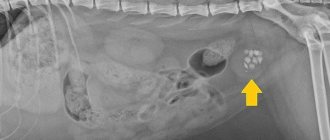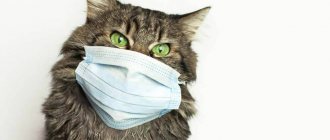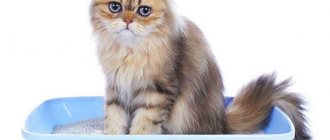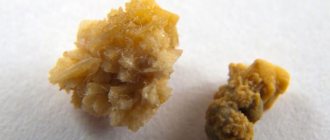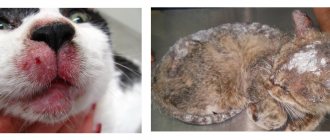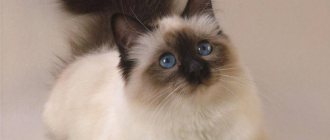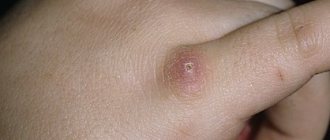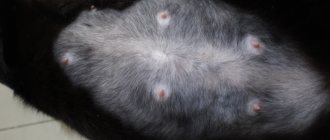Kidney disease in cats is one of the most dangerous pathological conditions that indirectly affects the normal life of a pet. The insidiousness of diseases of the renal structures is that the kidneys, due to their anatomical features, have large reserve capacities.
As a result of this, pathologies develop quickly, but symptoms arise when about 70% of the cellular structures of an organ are affected. In addition, the signs of kidney disease are very diverse, which leads to late diagnosis.
Acute pathological conditions of the renal structures quickly become chronic and disrupt the normal state of the cat’s body.
The functions of the kidneys for the body are invaluable. They filter blood from the circulation, inactivating toxic substances coming from the environment, as well as their own metabolic products. In the absence of normal filtration, toxic substances quickly accumulate in the body, poisoning the animal’s body, causing death.
Therapy for diseases of the renal structures requires long-term treatment, including the use of phytotherapeutic agents, antibiotics, immunomodulatory agents and other medications. During the treatment of kidney diseases, regular monitoring of blood counts is required, which will, in turn, allow timely adjustment of therapy.
Cats' weak point
It has been noticed that cats do not drink enough water. Moreover, dry food is now very popular, which is so convenient to feed your pets. They absorb water entering the body, which is why the animal’s kidneys and the entire urinary system certainly suffer. Of course, this is not a call to give up dry food, which contains an ideally selected composition of calories and vitamins.
It is important to always leave water available and in the right quantity for your cat.
In addition, the anatomical feature of the structure of the feline body is also to blame for the diseases of this organ. Their urinary system has several bottlenecks where blockages can occur. Because urine cannot leave the body in time, the kidneys are the first to suffer.
© shutterstock
Urinary health questions to ask your veterinarian:
- What could be causing my cat's involuntary urination? What are the emergency and long-term treatment options?
- Be sure to ask if infrequent or erratic episodes of involuntary urination could be a sign of a serious problem.
- Find out whether the problem is behavioral, environmental, or medical.
- Ask how diet and water consumption may affect the animal's health.
- Is nutrition part of a cat's treatment? Would you recommend Hill's Prescription Diet cat food for your pet's urinary tract health?
- What should I do if I have several cats? Can I feed them the same general food?
- How can nutrition help cope with the problem? What are the benefits of dieting versus taking medications?
- What are the pros and cons of using nutrition to support a cat's urinary health?
- Which type of food is best for cats with urinary tract problems, dry or wet? Why?
- If you feed your cat a mixture of dry and wet food, ask what diet foods can be mixed.
- How long should I feed my cat the recommended food?
- Ask how dietary cat foods help support your pet's long-term urinary tract health.
- What is the best way to contact you or the veterinary clinic if I have additional questions (email/phone)?
- Ask if your cat will need follow-up care.
- Find out if you will be notified or reminded by email.
Common feline kidney diseases
The most common and widespread kidney diseases in cats are caused by various inflammations and bacteria - all types of nephritis, cystitis. Since the organ filters blood, any infection that gets into it will certainly get there. If the disease is not treated in the acute stage, it quickly becomes chronic and causes problems for the cat for the rest of its life. Let's list the kidney diseases of furry animals, which are quite common:
Jades . There are three types - hydronephritis, glomeronephritis and pyelonephritis. These are a series of inflammatory kidney diseases caused by harmful bacteria entering the bloodstream and then into the kidneys. They can affect either one of them or both at once.
Polycystic disease . The disease is hereditary and cannot be cured. Such kidney diseases are typical for cats of certain exotic breeds, for example, Himalayan and Persian. It is accompanied by the appearance in the kidney tissue of small cavities filled with functional fluid. It is impossible to detect cysts in a kitten, although it may already be born with such a problem. Only an adult can be diagnosed with polycystic disease.
Amyloidosis . It is a consequence of a malfunction in metabolism, protein-carbohydrate balance and is accompanied by the accumulation and deposition of amyloid in the tissues of the organ. Although amyloidosis affects cats of all breeds, it is more often found in Somali and Abyssinian cats.
Congenital kidney anomalies . These include dysplasia, when the development and growth of an organ is abnormal, and aplasia, the absence of one or both kidneys. In the second case, the kitten has no chance to survive.
The kidneys in cats, like those in humans, consist of nephrons that are not capable of regeneration. Therefore, any disease must be treated, preferably at the earliest stages, so that it does not turn into chronic failure. Up to 20% of cats die from this diagnosis.
It is the advanced forms of kidney disease that lead to the fact that this organ is not able to perform the functions assigned to it by nature. The result of this is a metabolic disorder in the cat’s body, which leads to inevitable death.
Symptoms of kidney problems
The owner's observation of the pet's behavior will help recognize kidney disease in the early stages. However, veterinarians note that many try to help the cat on their own, thereby wasting precious time . Therefore, they come to see a doctor already with chronic forms of diseases. If you find the following symptoms of kidney disease in cats in your animal, immediately contact the clinic:
- Loss of appetite, weight loss, as well as occasional vomiting and bad breath. Because the organ cannot perform its functions fully, the cat’s body is exposed to intoxication by protein breakdown products.
- The amount of urine increases with kidney disease, but it has no smell or color, and the cat drinks a lot. Diseased kidneys are unable to filter the water entering the body, and it directly leaves the body, causing dehydration. Although the animal begins to drink a lot in an attempt to compensate for the loss, this cannot solve the problem.
- The nose and gums become pale. If kidney function is impaired, there is a decrease in red blood cells, the level of hemoglobin drops, which causes anemia and pallor of the mucous membranes.
- Ulcerative wounds appear in the oral cavity, and damage to tooth enamel is observed. Protein breakdown products cannot leave the body normally and enter the blood and then saliva. Under the influence of oral flora, they turn into ammonia, which not only causes a specific smell from the animal’s mouth, but also creates factors that irritate the oral mucosa.
- Hemorrhages in the eyes. One of the functions of the kidneys is the production of a special enzyme, chymosin, which regulates blood pressure. The disease prevents them from producing it in sufficient quantities, as a result of which the pressure increases, causing hemorrhages in the eyes. This pressure again negatively affects the functioning of the kidneys, forcing them to work harder, which leads to the death of nephrons. The disease begins to progress at high speed.
© shutterstock
Recommendations and prognosis of chronic renal failure
Depending on the severity of the disease and its cause, cats with ESRD may be given lifelong maintenance therapy, which may include daily oral medications, or daily injections, subcutaneous drips, or regular intravenous drips. In severe cases that cannot be treated, if the animal is in serious condition and, especially, with neurological disorders, euthanasia may be recommended.
The owner of an animal with chronic renal failure must understand that this disease will not go away in his pet, but will remain for life and will only progress every day. A diet and medications prescribed by a veterinarian can significantly improve the quality of life of a cat with chronic renal failure and prolong the functioning of the kidneys.
Do not forget that an animal with chronic renal failure will require regular examination and testing to correct the prescribed therapy and assess the progression of chronic renal failure. In animals in a stable condition, the frequency of medical examinations can be 2-4 times a year, in cats with a more severe stage of chronic renal failure - once a week, sometimes more often.
Video about chronic renal failure in cats with a veterinarian:
(c) Veterinary center for the treatment and rehabilitation of animals “Zoostatus”. Varshavskoe highway, 125 building 1. tel. 8 (499) 372-27-37
Diagnosis of kidney problems in cats
If you notice the characteristic signs of kidney disease in cats, you should urgently show the animal to a veterinarian. It is he who will prescribe diagnostic measures in order to accurately make a diagnosis.
Clinical tests will show a picture of the processes occurring in the pet’s body, and an ultrasound examination will show the size of the kidneys and their changes.
Acute diseases appear suddenly and it is not always possible to accurately say from urine and blood tests whether there are problems with this organ until more than half of the nephrons have died. The method of creatinine ratio in both blood and urine is considered to be of higher quality. It is this method that can most accurately diagnose organ disease. Pyelonephritis in cats is determined by urine culture.
Treatment of kidney diseases
To help your pet or completely get rid of problems in the early stages, it is necessary to correctly diagnose the disease. When a diagnosis is made, treatment should immediately begin, which has three main directions:
- Firstly, it is necessary to extinguish the action of the bacteria that provoked the inflammatory process. The main treatment for kidney disease in cats is antibiotics. If glomerulonephritis is detected in cats, cytostatics can be used for treatment.
- In parallel with the fight against inflammation, a course of drips is carried out to eliminate the effects of intoxication and dehydration of the body.
- And, of course, a strict diet with a decrease in proteins and microelements such as sodium and phosphorus in the diet. This will significantly reduce the load on the kidneys. The main goal of the diet is to save healthy nephrons.
© shutterstock
Prevention of kidney disease in cats
Knowing how difficult and life-threatening kidney diseases are in cats, it is better to focus your efforts on their prevention and follow a number of recommendations from veterinarians:
- food for domestic cats must be adapted to their digestive system, that is, in no case should they be “pampered” with salty, sweet, fatty foods and smoked foods, as well as pasta and legumes. Sausage is also not for an animal's bowl,
- The water quality must also be controlled by the owner. As a rule, chlorinated water comes from the tap; it is detrimental to the entire genitourinary system of the cat. Replace the water with filtered water or at least leave it in containers for some time so that most of the chlorine evaporates from it,
- the kidneys can get cold, which will also provoke an inflammatory process. Therefore, try to avoid drafts and strong ventilation during the cold season.
- Just like hypothermia, overheating will have a negative impact on your pet. A furry friend in a hot room absorbs more water, putting a strain on his kidneys,
- and, of course, mobility and mobility again. Young cats rarely get kidney disease because they are more active. But as they age and gain weight, they can become lazy. This is where problems creep in. Stagnation of urine will begin and, as a result, kidney disease. Make your pet move and play more, this will protect him from many problems with the normal functioning of his entire body.
The cat owner must remember that kidney diseases are very insidious . Kidney disease can be chronic and not show itself for a long time. The pain will not bother your pet, and symptoms appear only after some time. Veterinarians strongly recommend paying attention to the appearance and behavior of a friend, especially one over 7 years of age.
In order not to miss the moment, upon the arrival of this period, it is necessary to undergo annual scheduled medical examinations of your domestic cat with the necessary tests and an ultrasound scan.
Prices for appointments in our clinics
| Name of veterinary services | Unit | Price, rub |
| ⭐ Initial appointment | 1 animal | 400 |
| ⭐ Repeated appointment | 1 animal | 250 |
| Initial appointment with a specialist | 1 animal | 1100 |
| Consultation without an animal | — | 550 |
| Consultation with a doctor based on test results | 1 PC. | 400 |
| Weighing animals | 1 animal | For free |
| Additional fixation for aggressive animal behavior | 1 animal | 700 |
CLINIC REGISTRATION
HOME CALL
All our Veterinary Clinics:
For any suggestions regarding the site: [email protected]
|

